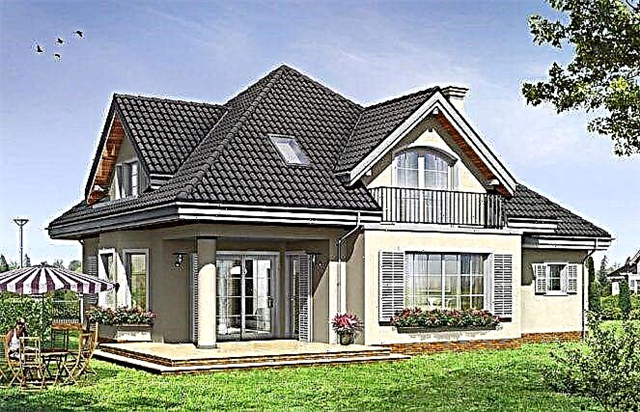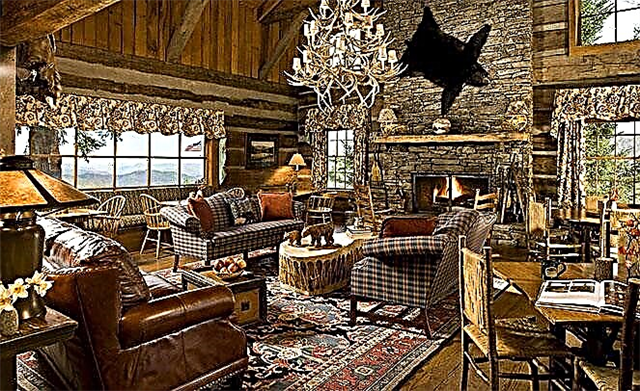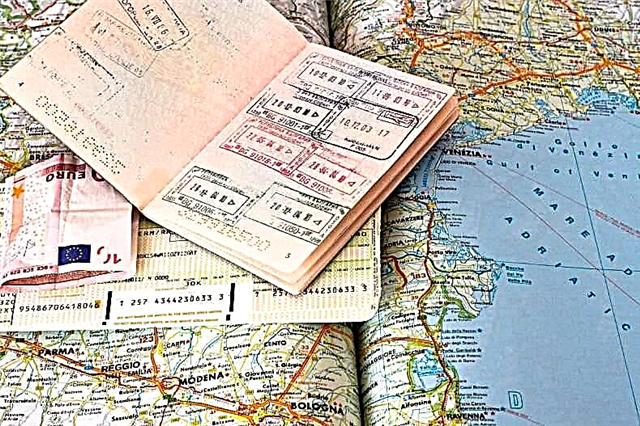Thanks to its long history and influences from various currents, Spanish architecture is represented by many architectural forms and styles. Gothic, Renaissance, Baroque - modern Spain is full of unique creations of world renowned masters. The various cities reflect the periods of Spain's development, from ancient times through graceful medieval Gothic to Plateresque and modern trends. The architecture of Spain annually attracts millions of tourists who come to see the original sites included in the UNESCO World Heritage List.

Typical features of Spanish architecture
The architectural heritage of Spain includes buildings not only on its territory, but also the creations of Spanish architects around the world. Spanish architecture begins its history with the early settlements of the peoples of the Mediterranean and significantly outstrips the ancient cultures of the Iberians and Cantabras in the pace of development. Particularly influenced by ancient Roman architecture, which flourished in Spain at the beginning of our era.
The emergence of Muslims in these lands in the 8th century led to the dominance of religious construction over secular construction. At the same time, independent architectural trends began to develop on the territory of Christian lands, which laid the foundation for Gothic and Romanticism.
To this day, the influence of the Mudejar style remains noticeable, which is a mixture of European and Arab architecture. The architecture of Madrid and Barcelona best represents the styles that exist in Spain, from the most ancient to the present.
The decision to use glass and concrete materials in decorative architecture was revolutionary for the culture of construction in these territories. Eclecticism and Art Nouveau are clearly expressed in the works of Antoni Gaudi, who determined the style of development of Barcelona for many decades. The architect has built the most famous houses in Barcelona.
In terms of the number of historically valuable buildings, Spain is in second place after Italy.
The modern architecture of Spain differs from world cultures in its technological effectiveness and bold decisions. The most famous architects of Barcelona, such as Luis Montaner (Casa Lleo Morera, Palace of Catalan Music), Enrique Mirayes (Santa Catarina market) have enriched not only the national architectural fund, but also worked in other countries.
Ancient roman style
Starting in the 2nd century AD, Roman rule over the Spanish territories led to rapid progress in construction. Small settlements turned into large cities, and a network of roads was built between them. Some architectural monuments of that time are not inferior in value and quality of construction to the best Roman monuments.

The Roman building traditions are most strongly manifested in Tarragona. This port city was the capital of the Catalan territorial unit. The features of Roman architecture are clearly traced here: splendor, symmetry, practicality. The many arches, domed ceilings and colonnades highlight the durability and complexity of the building.
The ancient Roman period was characterized by such complex engineering structures as the aqueduct in Merida, the bridges of Kordubsky, Merida, Alcantarsky.
Some of the monuments of Roman architecture are still functioning - for example, the Tower of Hercules lighthouse. Entertaining ancient Roman complexes are represented by amphitheaters, theaters and circuses on the streets of Merida, Cordoba, Toledo, Italica. The masters of the Roman era are unknown, but their work had an influence on Spain equal to that of the Muslim.
Mudejar style
The name of this style comes from the Arabic word mudaǧǧan, which means “domesticated”. It is characteristic of Spain in the X-XII centuries, appeared after the raids of the Visigoths and the multiple destruction of the monuments of Roman architecture. It is a synthetic style created from Arab and European architectural traditions.
Mudejar is characterized by the secondary nature of artistic features, which negatively affects the originality and quality of buildings.
The characteristic features of the style are considered to be Moorish architectural elements: horseshoe-shaped arches, carved wooden ceilings made of inlaid plates, plaster slabs and colorful tiles. The construction was carried out from natural inexpensive materials, the finished buildings were distinguished by their simplicity and functionality. Mudejar is typical for both residential buildings and office premises.

The most characteristic buildings in this style are the citadel and Pilate's House in Seville, the El Transito church in Toledo. Mudejar is best represented in Sahaguna, Toledo and Granada. The names of the masters who worked in the Mudejar style are unknown today.
Romanesque architecture
Romanesque architecture was built simultaneously in Italy, Spain and in the Pyrenees around the 13th century. The Romanesque style is characterized by primitivism: the large thickness of the walls, arched galleries as a decorative element of architecture, the complete absence of sculptures and stained-glass windows.

Romanesque architecture developed along with the Arabic and French styles. The influence of these two cultures is especially noticeable in the façade of the Church of Santa Domingo in the province of Soria.
Other representatives of the Spanish Romanesque are the Soria monastery of San Juan, the Isidoro Basilica in Leon, the cathedrals of Salamanca, Zamora, Plasencia. In total, there are more than 600 churches in Spain built during this period.
The formation of the Romanesque style was greatly facilitated by the monastic congregation of Cluny, which became the founder of the Way of Jacob, consisting of monasteries built during that period to serve pilgrims going to the relics of St. James.
Gothic direction
The origin took place during the heyday of the Romanesque culture (around the XIV century). This period is characterized by an active struggle with Arab culture and no less active development of the Spanish language, architecture, and fine arts.
The Arabian influence is observed in the walls covered with volumetric decorative ornaments, heavy facades and bell towers pointed like a minaret. The patio in Spanish houses becomes the centerpiece of the project, and the entire structure is built around it.

The best groups of monuments of Gothic art are considered to be Castilian and Catalan. They include the most famous cathedrals in Toledo, Burgos and Girona, the Barcelona Church of Santa Maria del Mar, the Silk Trade Exchange in Valencia. The architecture of Valencia and its development is determined by the Gothic for a long period after the first buildings.
The Royal Chapel in the city of Granada is one of the most visited Gothic sights in Spain.
Famous architects of this time: Guillaume Bophil, Ventura Rodriguez, Juan de Cologna, Enrique Egas.
Renaissance in Spain
Borrowing certain Gothic forms, the Renaissance began to manifest itself in the late 15th century as an artistic style. Then several architectural styles were formed, one of which was the plateresque, and the other - the Renaissance. The Renaissance was distinguished from plateresque by the severity of decorative elements, restrained planning.
The symmetry of the compositions and the classic arched forms alienated the Renaissance from the sophisticated aggressive Gothic.
The most memorable representatives of the Spanish Renaissance are the Charles Palace in Granada by master Pedro Machuca, a Catalan artist and architect. The El Escorial Monastery and Jaén Cathedral are also widely known. Both monuments belong to the hand of Spanish masters - Juan de Herrera and Andres Vandelvira, respectively.

Diego de Siloé is another renowned Renaissance architect who designed the façade of the Royal University of Salamanca.
Baroque style
The restraint and symmetry of the Renaissance was supplanted by the frivolous and decorative Italian Baroque. Translated from the Italian Baroque means "excess, whimsy."
The reformation of the Catholic Church and the emergence of the teachings of Copernicus had a great influence on the formation of this trend. At the beginning of the 18th century, the first elements of the Baroque era appear on the facade of the Cathedral in Granada.

Decorative forms, elements of small stucco molding, arched windows, a small garden at a residential building - all this gives the Baroque style the artistry inherent in Spanish culture.
The cathedral in Valencia is one of the best examples of the grandeur of the Baroque style, a mixture of real and fictional images.
Another building that defines the style is the Cathedral of St. James in the city of Santiago de Compostella.
Simultaneously with the growing pretentiousness of architecture, landscape gardening art is developing in the style of geometricism: park areas are divided into flat quarters. The best Baroque architects include Gomes de Mora (Madrid's Plaza Mayor), Carlo Fontana (Salamanca Cathedral), Francesco Hurtado (Granada's Paular Monastery).
Colonial architecture
The Spanish colonial style in architecture was formed mainly in the territories of the Spanish colonies in Latin America. It prevailed from the end of the 17th century to the middle of the 18th century, at the beginning of the 19th century it was replaced by plateresque. Distinctive features of the colonial orientation - a mixture of baroque pretentiousness with the reliability and stockiness of buildings.

A characteristic feature of the colonial style is the use of stucco material, which was used for baroque stucco molding and house plastering. Stucco is a durable art material, artificial marble, consisting of plaster, glue and marble chips. Sometimes alabaster, stone powder and chalk were added to the mixture.
Over time, the colonial style received a subspecies - an exaggerated baroque called "churrigueresco".
For the first time, the colonial style manifested itself in the construction of a temple in Cuzco.
The Church of St. Francis in Peruvian Lima is complemented by provincial buildings, which can also be seen in La Paz and Potosi. The best architect of this style is Lorenzo Rodriguez, who built the unique Metropolitano Cathedral (Mexico City).
Plateresco style
The style got its name from the Spanish word platero - jeweler. Plateresco is an eclectic style that combines the features of Mudejar, Gothic, Italian Baroque, which is an artistic jumble of decorative elements with plant and fantastic motives.

Characteristic features are the facades with multi-tiered turrets, divided into three vertical parts, as well as columns in the neoclassical style.
Plateresco can be recognized by the many medallions and heraldic symbols on the facades of buildings.
The most striking buildings of the plateresque style are the University of Salamanca with its intricate stucco moldings, the Seville Cathedral, the Infantado Palace in Guadalajara, and the University of Alcala de Henares.
Diego de Rioglio and Juan de Guas were recognized as the best masters who worked in the plateresque style. They defined the mature stage in the development of Plateresco and made it one of the most memorable Spanish architectural styles.
Development of modern architecture
This period dates back to the 80s of the last century. The flow of European investments into the country's economy and the growing number of tourists prevented the architectural crisis. Modern architecture in Spain has the following characteristic features: the use of glass and concrete materials, geometric forms, laconicism and functionality of design.
Among the objects of modern architecture, you should pay attention to the Auditorio Kursaal in Donostia, the Auditorio Tenerife, located in the Canary Islands, the Guggenheim Museum in Bilbao.
From 2006 to 2021 inclusive, a complex of four skyscrapers, mentioned in almost every modern travel guide: Torre Cepsa, PwC, Espacio and Cristal, was under construction in Spain.

There are restaurants and entertainment centers in these business centers, but the area is not rented out for living. The fame of the great architects of our time was earned by Santiago Calatrava, Zaha Hadid, Frank Gehry.
Conclusion
The architecture of Spain is a mixture of different styles that have appeared on its territory as a result of the seizure of lands by representatives of different nations. Each subsequent style determined the direction in architecture, harmoniously developing from the previous style.
Before going to Spain for sightseeing, check out the features of Spanish architecture in more detail. Only in this way can you fully assess the level of development of architecture in this beautiful country.











